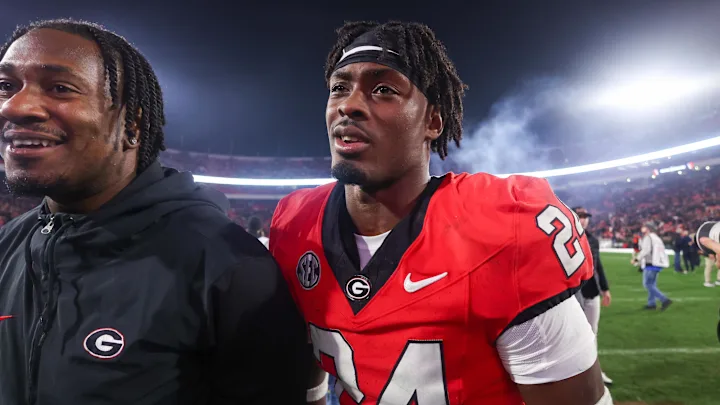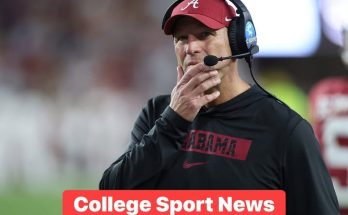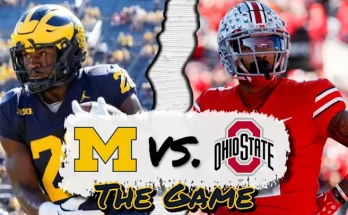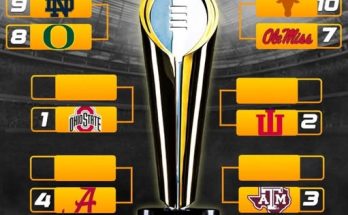Following Starks and Jackson’s departure, the Georgia Bulldogs rebuild their safety unit.
The departure of star players from any college football team often signals a period of transition and uncertainty. For the Georgia Bulldogs, the departure of safety tandem Richard LeCounte, Tyrique Stevenson, and Lewis Cine over the past few seasons has raised several questions about the future of the safety position in Athens. These players were crucial cogs in one of the most dominant defenses in college football history, particularly during the 2021 season, when Georgia’s defense allowed just 10.2 points per game, leading to a National Championship victory. Now, following the departures of these key players, Georgia finds itself at a crossroads in its secondary.
However, the Bulldogs, under head coach Kirby Smart, have consistently proved their ability to reload rather than rebuild. Recruiting and developing talent have been central to Georgia’s success over the past several years, and the safety position has received particular attention in the recruiting cycle. With new faces set to fill the shoes of LeCounte, Stevenson, and Cine, Georgia’s defense is poised to continue its dominance in the SEC and on the national stage. This article explores how Georgia’s coaching staff is rebuilding their safety unit, which players will step into the spotlight, and how they can continue the tradition of excellence that has become synonymous with Georgia football.
The Legacy of Starks and Jackson: A Look Back at Georgia’s Safety Play
To fully appreciate the significance of the rebuild, it is necessary to reflect on the contributions of the players who are no longer part of the Georgia defense. Richard LeCounte was a fixture in the secondary during his tenure, known for his ball-hawking skills and leadership. His ability to diagnose plays quickly and act decisively made him one of the SEC’s top safeties during his career. Tyrique Stevenson, who was known for his versatility and physicality, contributed to the Bulldogs’ secondary and played a pivotal role in defending against both the pass and run. Finally, Lewis Cine, a first-round pick in the 2022 NFL Draft by the Minnesota Vikings, epitomized the modern safety. He was an explosive force in the defensive backfield, often coming up to stop the run and making pivotal plays in coverage.
Their collective talents helped Georgia develop one of the most suffocating defensive units in recent memory. The Bulldogs’ defense was built on pressure up front, but the secondary—specifically the safety position—was critical in executing the complex schemes that defensive coordinator Dan Lanning (and later Will Muschamp) employed. The safety unit, often tasked with covering ground quickly, had to be both athletic and cerebral, traits that LeCounte, Stevenson, and Cine embodied.
As these players graduated or declared for the NFL Draft, Georgia’s coaching staff found themselves in the position of having to find new stars to fill their shoes. The challenge was monumental, as the safety position was no longer just about securing tackles and making interceptions. It was about the ability to process the game at an elite level while simultaneously being able to impose physicality and speed on the opponent. The next group of safeties would need to match that level of performance and even raise the bar higher.
Kirby Smart’s Approach to Rebuilding the Safety Position
One of the hallmarks of Kirby Smart’s tenure as Georgia’s head coach has been his ability to recruit, develop, and coach up talent. Known for his attention to detail and his defensive background as a former Nick Saban disciple, Smart has consistently built defenses that rank among the best in college football.
Smart’s philosophy in recruiting and developing safeties revolves around athleticism, intelligence, and versatility. Whether it is in the coverage game or in run support, Smart demands that his safeties be able to make plays in a variety of ways. This flexibility allows Georgia’s defensive coordinators to deploy multiple defensive looks, which can be essential in both SEC play and against high-powered offenses in the College Football Playoff.
To ensure that Georgia remains competitive at the safety position, Smart has focused on identifying top-tier recruits who can step in and contribute immediately or in the near future. Georgia’s 2022 and 2023 recruiting classes featured several top-rated safety prospects who were expected to challenge for playing time early in their careers.
Recruits Who Will Step Up
Malaki Starks (Sophomore)
One of the most promising players to step into a starting role at safety for Georgia is Malaki Starks. Starks was one of the highest-rated prospects in Georgia’s 2022 recruiting class and quickly made an impact during his freshman season. Known for his physicality, speed, and ability to cover ground in both the run and pass game, Starks has all the tools to become an elite player at the safety position. In his first season with the Bulldogs, he was able to show glimpses of his potential, earning significant playing time and making crucial plays when it mattered most.
As a sophomore, Starks is expected to become a leader in the secondary. His combination of athleticism and understanding of Georgia’s defensive schemes makes him a natural fit for a prominent role in the defense. Whether playing as a centerfield safety or closer to the line of scrimmage, Starks has the versatility to excel in multiple positions, something that will be critical for Georgia’s continued success on defense.
David Daniel-Sisavahn (Redshirt Freshman)
David Daniel-Sisavahn is another player who could make an immediate impact on Georgia’s safety unit. A redshirt freshman, Daniel-Sisavahn has spent a year in the program getting acclimated to the speed of the SEC and learning under veteran players. His size (6’2″, 210 lbs) and athleticism allow him to play in both deep and shallow zones, and his physicality makes him a threat in run support.
While Daniel-Sisavahn may not be as well-known as some of the other players in the Georgia secondary, his development during the offseason has positioned him to compete for a starting spot in the safety rotation. If he continues to improve, he could become a key player in Georgia’s defense in 2025.
Julian Humphrey (Freshman)
A freshman in the 2023 class, Julian Humphrey is a highly-touted prospect from Texas with excellent coverage skills and a natural ability to read the quarterback. While he may be a bit raw, Humphrey’s high ceiling and natural instincts make him an exciting prospect for Georgia’s secondary. While it is unlikely that Humphrey will take on a starting role immediately, he could see significant playing time and contribute in nickel and dime packages, especially as he grows into the college game.
Tykee Smith (Graduate Transfer)
In addition to the younger prospects, Georgia also brought in graduate transfer Tykee Smith, a former West Virginia standout. Smith is a versatile safety who has extensive experience playing at the collegiate level. His leadership, intelligence, and understanding of defensive concepts will be crucial for the Bulldogs as they look to rebuild the safety unit.
Smith’s experience and maturity will help him contribute immediately, especially in passing situations. His ability to cover in man-to-man and his skills as a ball hawk will make him an asset for the Bulldogs’ secondary, where he will likely share snaps with Starks and Daniel-Sisavahn.
Scheme and Coaching: What to Expect from the Bulldogs’ New Safety Group
Under Kirby Smart and defensive coordinator Will Muschamp, Georgia has built a defense that thrives on versatility, and the safety position is no different. Georgia’s safeties are asked to do more than simply cover deep passes and stop runs—they are expected to be playmakers in all aspects of the game.
The scheme Smart runs is designed to keep offenses guessing, and safeties must be able to read the quarterback’s eyes, react quickly, and adjust to different alignments and formations. As a result, Georgia’s safeties must be able to excel in zone coverage, man-to-man coverage, and provide support in the run game. Safeties are often tasked with covering tight ends and running backs in the passing game, which means they need a unique blend of speed, strength, and intelligence.
The new group of safeties must be able to execute Smart’s defensive philosophies, which revolve around stopping the run first and making plays on the ball when the opportunity arises. Georgia’s safeties must also be able to communicate effectively with the rest of the defense, ensuring that the entire secondary remains aligned and in position to make plays.
The Future of Georgia’s Safety Position
While rebuilding any position group after losing talent like LeCounte, Stevenson, and Cine can be challenging, Georgia’s culture and recruiting prowess set the Bulldogs up for continued success at the safety position. With a blend of young talent, experienced transfers, and a coaching staff that excels at developing players, the Bulldogs are in a strong position to maintain their defensive dominance.
The next chapter for Georgia’s safety group may look different, but the expectation remains the same: elite play. Malaki Starks, David Daniel-Sisavahn, Julian Humphrey, and Tykee Smith will be at the forefront of Georgia’s secondary, and they will undoubtedly continue the tradition of defensive excellence that has become synonymous with Georgia football. As Kirby Smart’s program evolves, one thing remains certain—the Bulldogs will always find a way to get the most out of their talent, and the safety position will continue to be a critical part of their success.
The rebuilding process may take time, but the future of Georgia’s safety unit is undoubtedly bright. With elite prospects on the roster and a championship-caliber coaching staff at the helm, Georgia’s defense is primed to remain one of the best in the nation, and the safeties will be integral to that success.



